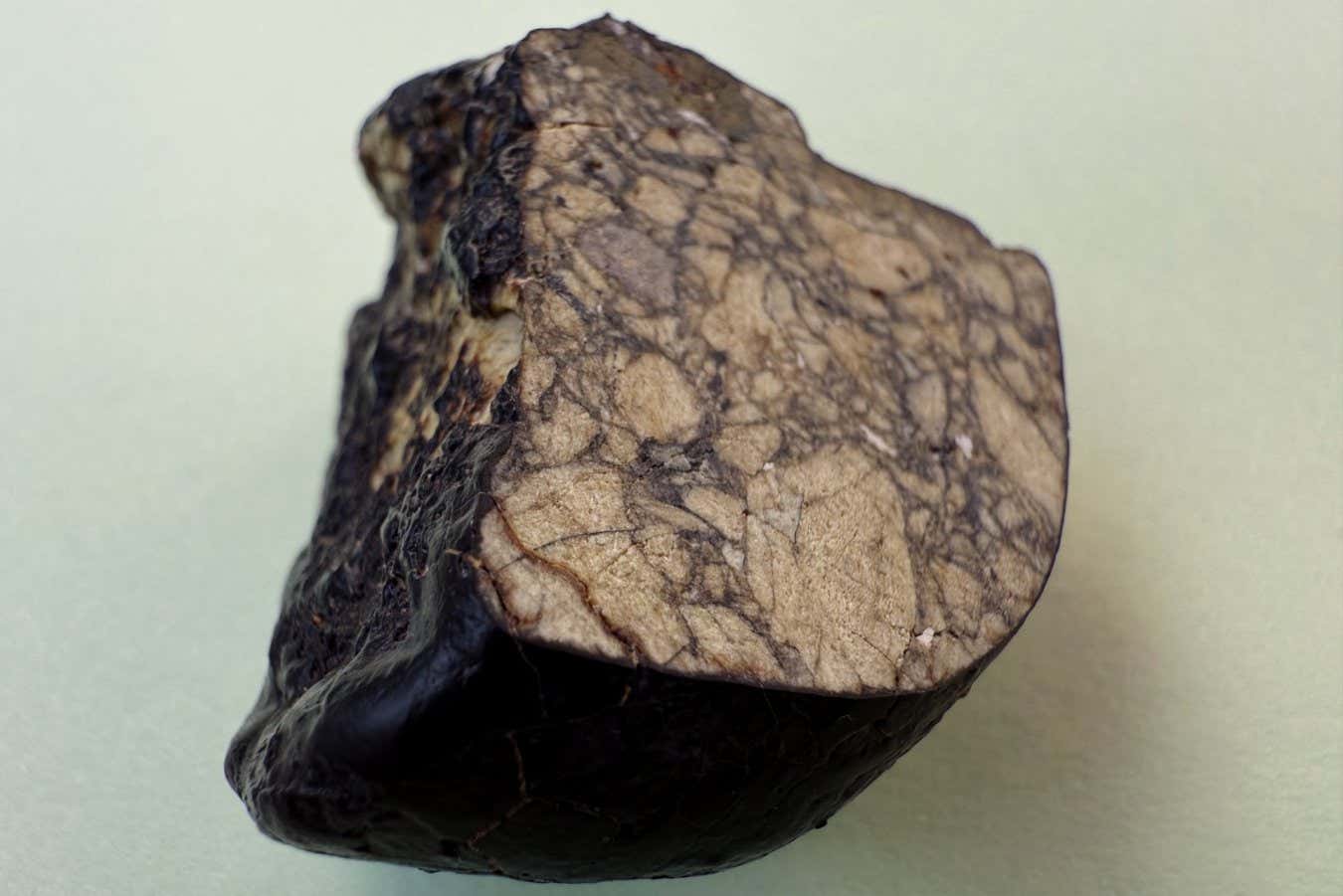Now Reading: Meteorite Discovery Reshapes Understanding of Solar System Formation
-
01
Meteorite Discovery Reshapes Understanding of Solar System Formation
Meteorite Discovery Reshapes Understanding of Solar System Formation

Fast Summary
- A small meteorite named Northwest Africa 12264, weighing around 50 grams, may challenge current models of solar system formation.
- The meteorite’s composition indicates it originated from the outer solar system and was part of a planetary mantle.
- Its unexpected age, measured by lead isotopes, reveals that rocky planets in both inner and outer solar systems formed together.
- Prior research suggested a three to four-million-year difference between inner and outer protoplanet formation due to differences in water and ice content affecting core melting times.
- this new finding could force a major revision of existing planet formation models.
- Scientists emphasize the importance of accurate chronology since even shifts of one million years can be significant for understanding formative processes in the solar system.
Indian Opinion Analysis
this groundbreaking finding underscores how advancements in space science constantly refine our understanding of cosmic origins. For India-where space exploration is gaining momentum through missions like Chandrayaan and others by ISRO-such discoveries are crucial reminders about the complexity underlying celestial phenomena. It underlines the necessity for robust scientific inquiry as nations invest heavily into interplanetary research programs aimed at unlocking global mysteries or applications relating to star systems beyond Earth itself importantly enhancing collaborative opportunities scientifically globally!
























